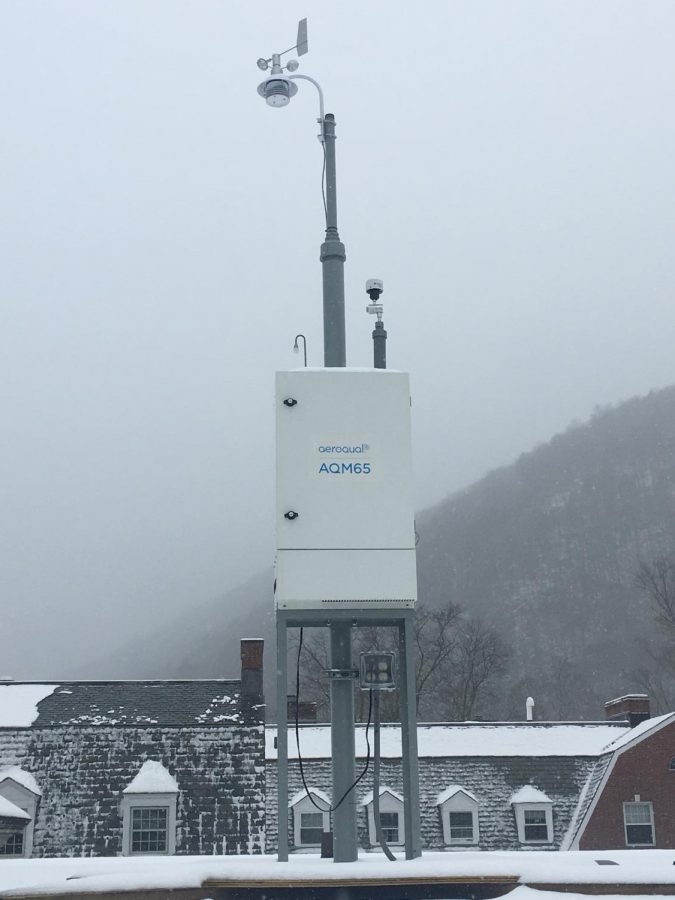Newly Installed Air Monitoring Network
February 22, 2019
With all of the recent political discourse surrounding climate change and the environment, it is no surprise that the construction of a gas power plant was met with concern from local citizens, including the Kent School.
Hailing back to the town’s early days, Kent’s air quality was not always up to the standard it is today. In the former industrial town, an operating an iron furnace brought side effects, including lots of deforestation and poor air quality. Kent School was founded after the land recovered from such damage.
The recent announcement of a natural gas power plant in New York sparked concern in our town. With winds, there is a chance that emissions would remain in Kent. Since the plant only had to be approved in the state of New York and the EPA, any towns in Connecticut that could potentially feel the effects had no say.
Effects that could hypothetically occur include leaks that contribute to ever-climbing quantities of hydrocarbons, methane, and carbon dioxide emissions, not to mention potentially worse air quality in surrounding areas.
As a response, an air monitoring network was built at the Kent School. Michael Benjamin, a former Kent employee and an active environmental activist, helped reach out to a company called AirQuail to install the machine. Father Schell agreed to help finance the machine, and other groups such as the Kent Land Trust also contributed to its establishment.
If the plant functions as it promises, there should be no severe implications for those living in the surrounding area. The network will act as a safeguard to make sure the plant is not causing unplanned consequences.
Mr. Klingebiel, the Chair of the Science Department, spoke of the reasoning behind the network. He explains, “New York state said it was okay, but Connecticut doesn’t have any input. When in reality, with westerly winds, all the air, all the emissions, they’re not going to be in New York for five minutes before they’re in Connecticut.”
In addition to this technology monitoring the plant’s impact, Mr. Klingebiel also spoke of his plans to use the actual data in his AP Environmental Science classes. Hopefully, the network will prove the air quality won’t suffer, and the data can be an educational opportunity for students.








Jesse Klingebiel • Feb 22, 2019 at 1:54 pm
Great article Erin!!